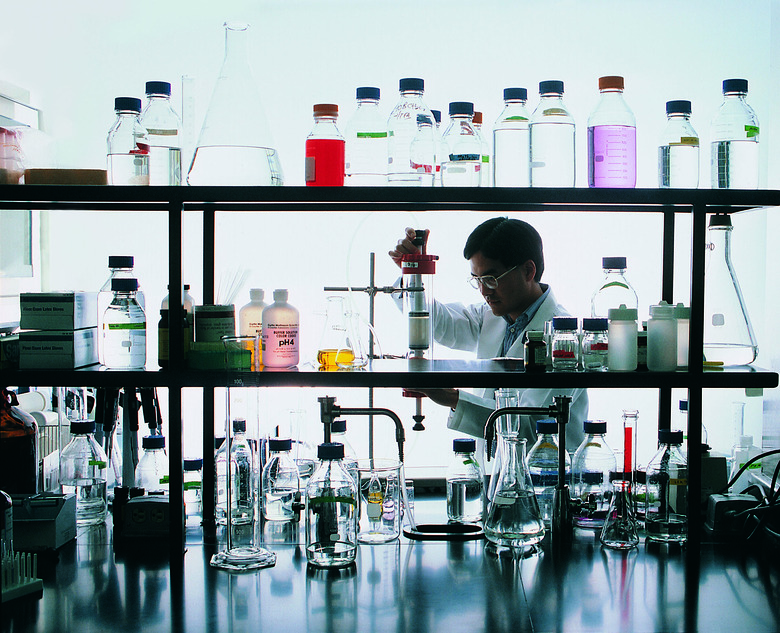How To Calculate A Rate Constant
Rate constants convey the speed of a reaction, letting you know how fast or slow an ingredient in the reaction will be consumed per unit volume. The higher the rate constant, the faster the reaction will proceed and the faster a specific ingredient is consumed. The units of a rate constant are the amount of reactant consumed divided by time and total reaction volume. Because there is more than one reactant in any reaction, it is possible to calculate different rate constants for the same reaction.
Step 1
Calculate the volume where the reaction takes place. The combustion reaction in this example takes place in a cylindrical rocket that is 90 centimeters long and 72 centimeters in diameter. The volume of this cylinder is equal to Pi times the square of the radius multiplied by the length, or 3.14 times 1296 square centimeters times 90 centimeters. The volume equals 366,400 cubic centimeters, or 0.3664 cubic meters.
Step 2
Calculate the consumption rate of the reactants. Results from the example experiment showed that 180 kilograms of water were created per second. The chemical reaction equation states that one molecule of oxygen, or two oxygen atoms, is used to create two molecules of water. Therefore we can say that 180 divided by 2, or 90 kilograms of oxygen molecules were consumed per second in the reaction. One molecule of hydrogen, or two hydrogen atoms, are used to create one molecule of water, so 180 kilograms of hydrogen molecules were consumed per second.
Step 3
Calculate the rate constant in terms of oxygen per cubic meter by dividing the rate of oxygen consumption by the reaction volume: 90 kg/s divided by 0.3664 equals 245.6. Therefore, the rate constant of this reaction is 245.6 kilograms of oxygen per second per cubic meter.
Step 4
Calculate the rate constant in terms of hydrogen per cubic meter by dividing 180 kilograms by 0.3664. Therefore, the rate constant of this reaction is 491.3 kilograms of hydrogen per second per cubic meter. Each rate constant is valid because it is calculated using a different reactant as a basis.
TL;DR (Too Long; Didn't Read)
Incorporating volume into the rate constant calculation allows the constant to be applied to the same reaction in a different volume as long as the other reaction conditions, such as temperature and distribution of reactants, are the same.
References
- Chemical Reaction Engineering, 3rd ed.; Octave Levenspiel
- Elements of Chemical Reaction Engineering, 4th ed.; H. Scott Fogler
Cite This Article
MLA
Bush, Joshua. "How To Calculate A Rate Constant" sciencing.com, https://www.sciencing.com/calculate-rate-constant-6122152/. 24 April 2017.
APA
Bush, Joshua. (2017, April 24). How To Calculate A Rate Constant. sciencing.com. Retrieved from https://www.sciencing.com/calculate-rate-constant-6122152/
Chicago
Bush, Joshua. How To Calculate A Rate Constant last modified March 24, 2022. https://www.sciencing.com/calculate-rate-constant-6122152/
